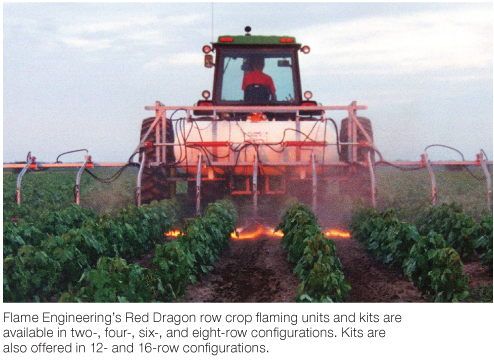Weed Control
By Jeff Hafner, Owner 06/01/2024
The definition of a weed is a plant out of place.
Whether in crops or gardens, there will always be weeds.
There are many ways to manage weeds in crops. The best is prevention through smother crops (oats or alfalfa) or crop rotation (small grain interplanted with clover then corn the following year). There are herbicides (chemical) and mechanical cultivation. Basically any way to pull, cut or eliminate a weed.
In our organic farming operation we use a variety of methods for weed control depending on crop emergence, type of crop and available tools/implements; often making multiple passes with equipment instead of spraying chemicals to better preserve the soil ecology and microfauna that are present.
The two general rules with mechanical cultivation are 1) the smaller the weed, the easier it is to kill and 2) keeping the crop taller than the weeds makes the weeds easier to manage. Think how easy it is to pull a one inch tall weed verses a one foot tall weed.
If you get down on your hands and knees and scrape away the top one inch of soil you will notice “white hairs”, these are plants/weeds that have already germinated, but have not emerged yet……..Now is the time for mechanical cultivation like a rotary hoe or tine weeder.
Rotary hoes and tine weeders are tools perfect for this size of weed. This first pass can be made BEFORE the crop is up. Large seeded crops (corn, soybean, squash, etc) are planted deeper than these weeds and won’t be damaged. The pass is very shallow, one half inch to one inch deep. After weeds have emerged a tine weeder or rotary hoe can be used while your main crop is under four to six inches tall.
Rotary hoe - shallow cultivator that eliminates weeds that are closer to the surface without damaging your crops, it also helps to break up the soil for plant emergence.
Tine weeder - tines are delicate around the plants, but tough enough to take out weeds at this early stage.
Once your crop is above six inches, cultivators are your only option in row crops. There are not many options for small grains (we rely on crop rotation). Cultivators come with many options for sweep (part that contacts the soil), including size and number.
Field Cultivator - can make multiple passes when crops are above six inches until the rows close or plants get too tall.
The size and number of sweeps depends on soil types, amount of residue in the field and spacing. There are also many options for shields to protect the smaller more delicate crop. Rolling shields and tunnel shields are two examples. While the crop is small, soil is normally pulled away from the crop and/or shields are used to control how much soil “rolls through” the row to cover weeds.
Flame cultivation is another option. On a flame cultivator, propane is used to burn off the weed. Again this works best when weeds are smaller than the crop.
The last pass in mechanical cultivation is called lay-by. This pass is made right before the crop becomes too tall for the equipment. Soil is pushed into the row, smothering weeds that are within the crop.
Focusing on the two keys to mechanical cultivation can help keep weeds at bay until crops have a chance to take over.
There are also many ways to manage weeds in gardens and greenhouses; for instance hand-held flame weeders or hand-operated garden tillers are just a few options that mimic large crop implements on a small scale, which we will talk about in a future blog.
No matter how you accomplish your weed control, keep track of your successes and failures to build on for the next year.
And that is how you grow!





